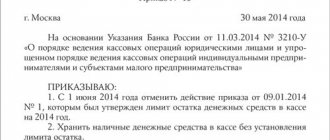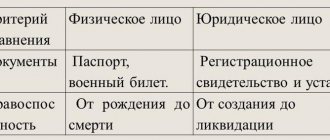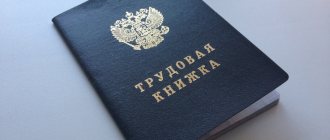Online accounting for individual entrepreneurs on OSNO!
The service will help you fill out 3-NDFL and determine what is considered income/expense.
Try for free
For individual entrepreneurs, accounting and reporting depends on the chosen taxation system. In this article we will look at maintaining KUDiR IP on OSNO. KUDiR is an accounting book, one of the main elements of control over income and expenses. An individual entrepreneur is obliged to maintain it. The book is filled out strictly in accordance with the requirements of the current legislation of the Russian Federation.
Why do you need KUDiR IP?
KUDiR is recognized as a tax accounting register, although it combines accounting and tax accounting. The document reflects the following data:
- information about fixed assets and depreciation;
- calculation of wages and taxation;
- utilities and other expenses;
- taxation of business transactions with identification of the difference, which is ultimately subject to personal income tax.
KUDiR IP is needed to form the tax base for personal income tax (NDFL) for the tax period, which is considered a calendar year. Individual entrepreneurs pay 13% of the calculated difference between income and expenses to the budget.
If at the end of the tax period the financial result is negative, i.e. There is a loss, then no tax is paid. Also, the loss is not carried forward to a future tax period and is not covered by the profits of subsequent years.
Range and deadlines for submitting reporting documentation for individual entrepreneurs with employees
If an individual entrepreneur has hired personnel, then he must report on VAT, personal income tax and property assets, which are presented in the last section. The report on these parameters for individual entrepreneurs with and without employees does not differ in terms of reporting deadlines and form.
In addition, if there are employees, individual entrepreneurs must submit reports on contributions to OSNO, on personal income tax for each individual registered employee and on the Pension Fund.
For personal income tax, for each registered employee it is necessary to submit:
- Report 6-NDFL to the Federal Tax Service, which is submitted quarterly. The deadline for filing for the first 3 quarters is within a month after the end of the quarter, the annual report is due April 1 of the next year.
- Report 2-NDFL to the Federal Tax Service, which is submitted once a year. In 2020, reports for the past year on basis 1 are submitted before April 2 of the current year, on basis 2 – before March 1 of the current year.
For contributions for registered individual entrepreneurs:
- Calculations for insurance premiums are submitted to the Federal Tax Service quarterly. Submission deadlines are within a month after the end of the quarter.
- 4-FSS is submitted to the FSS. Submission deadline is the 25th day of the month at the end of the quarter.
Reports on personalized reporting for employees:
- SZV-M is submitted to the Pension Fund of Russia on a monthly basis. The deadline is until the 15th of the new month.
- SZV-M-STAZH is submitted to the Pension Fund. Issued during the year only for employees who apply for a pension. Submission must be made within 3 days after receiving the application from the employee. This type of annual report is due for the previous year on March 1 of the current year.
Maintaining KUDiR on OSNO
KUDiR on OSNO is formed from the beginning of the tax period. The accounting book is kept either by the entrepreneur himself or by an accounting employee; it is kept for 4 years. Individual entrepreneurs provide an accounting book along with 3-NDFL reporting. Thus, KUDiR is submitted to the tax office at the place of registration until April 30.
The magazine has a unified form. However, the entrepreneur has the right to independently create the form of the document. Coordinate all changes with the tax authority. If the developed version of the register is not approved, the tax office may not count the bookkeeping.
KUDiR is maintained in paper or electronic form. The book, issued in electronic form, is printed at the end of the calendar year. It is also laced, numbered and signed. Do all this with the book, which was kept in paper form. Previously, KUDiR had to be certified by the tax office, and the paper book was certified before filling out, and the electronic book after printing. Now the law does not require a certification procedure.
Range and deadlines for submitting reporting documentation for individual entrepreneurs without employees
The main question that concerns the vast majority of entrepreneurs is the question of what individual entrepreneur reports to OSNO should be submitted by an individual entrepreneur who does not have employees.
Among the main documents that are regulated for individual entrepreneurs without employees are:
VAT
rented once a quarter. It should be noted that the report must be submitted electronically by the 25th of the month, which is the month of the end of the quarter. It is worth noting that, despite quarterly reporting, tax must be paid monthly.
Personal income tax
Rented once a year until the end of April. Personal income tax for individual entrepreneurs on OSNO is calculated by analyzing a person’s income from business activities and the person’s personal income that does not relate to business activities. The tax rate of 13% for personal income tax applies only to residents of Russia; for non-residents of the Russian Federation the tax will be about 30%.
Property tax
can range from 0.1 to 2% of the value of the individual entrepreneur’s real estate assets. It is worth noting that this range of individual entrepreneurs’ expenses on OSNO cannot be optimized towards reduction, since the value of real estate assets is confirmed by cadastral specialists and practically does not differ from the actual value of the property. However, this parameter reduces the level of the company’s net profit, which, accordingly, entails a decrease in personal income tax.
The above range of individual entrepreneurs’ reporting is submitted to the Federal Tax Service exclusively in electronic form.
Contents of KUDiR
KUDiR reflects information about the individual entrepreneur, the contents of the document, as well as six sections. The type of tables and sections of the book depends on the type of activity of the organization. The document reflects all income and expense procedures. Here are the requirements for the responsible person when maintaining the book:
- checking the receipt of cash and non-cash funds;
- control over payment to the supplier for each type of product sold during the work shift;
- correct write-off of product costs as expenses, which is carried out using the FIFO method or the average unit cost.
Entries in the accounting book are made continuously on the basis of primary documents at the time of the transaction, i.e. on a cash basis. Business transactions are reflected in chronological order in ruble equivalent. For transactions in foreign currency, their value is translated at the rate of the Central Bank of the Russian Federation into rubles on the day of receipt or disposal of funds.
If errors occur in KUDiR OSNO, they are corrected: the incorrect information is carefully crossed out, substantiated by the correct entry, certified with the signature of the individual entrepreneur and the date of the correction is indicated. The tax office may not accept KUDiR when submitting reports due to serious filling errors.
Procedure for filling out KUDiR IP OSNO
Each section of KUDiR IP OSNO includes many subparagraphs, the completion of which is mandatory.
The title page includes information about the individual entrepreneur: full name, INN, address, information about the tax authority at the place of registration of the individual entrepreneur, data from the registration certificate, bank details, as well as the individual entrepreneur’s signature, date and other data.
Section 1 displays all income that was actually received in the tax period, including advances, as well as expenses actually incurred in this period. This reflects raw materials, semi-finished products and other inventory items acquired by the individual entrepreneur for subsequent financial gain. Moreover, costs during the manufacture of products are written off as expenses only in relation to the products sold. They can also be written off according to the standards established by the legislation of the Russian Federation.
Sections 2 - 4 include information on depreciation of fixed assets, low-value wear-and-tear items (IBP) and intangible assets. The initial cost of fixed assets and intangible assets is determined based on the cost of acquisition, delivery costs and putting the property into operation. Depreciation is written off as expenses only in the amount accrued for the tax period. Depreciation deductions are made only in relation to the individual entrepreneur’s own property, i.e. which was purchased for a fee. Income from the sale of fixed assets and intangible assets is the difference between the sale price of the property and its residual value.
Section 5 covers payroll and taxes. The table in this section resembles a payroll sheet; it is generated for each month. The table displays the following information:
- the amount of calculated and paid wages;
- incentive and compensation payments;
- the cost of goods that are issued as remuneration in kind;
- payments under copyright and civil law contracts;
- other payments;
- calculated personal income tax;
- other deductions;
- date of payment;
- signature on receipt.
Section 6 calculates the tax base for personal income tax, which is formed based on the results of the calendar year. On its basis, 3-NDFL reporting is completed.
1C Entrepreneur 8 (and free analogues)
1C:Entrepreneur 8 is a configuration of a popular program for individual entrepreneurs (IP). The program allows you to:
- keep records
- prepare reports
- keep a book of income and expenses (KUDIR)
If necessary, “1C Entrepreneur 8” can be used in conjunction with the “1C Trade Management” and “1C Salary and Personnel Management” configurations. The program is suitable for both entrepreneurs on OSNO and entrepreneurs on the simplified tax system (simplified tax system) 6% and 15%.
When purchasing the 1C Entrepreneur 8 program, you can save a lot of money - due to high competition, some companies selling 1C products offer serious discounts , so carefully study all offers. You can also buy the program (for any city in Russia) here. If you decide to register a legal entity, you will not need to buy an additional version of 1C - the transition to a legal entity is carried out only by changing the settings in 1C Entrepreneur.
Since various individual entrepreneur reporting forms are constantly changing, a free program update via the Internet is provided.
1C Entrepreneur is:
- work with primary data (input, storage, printing)
- settlements with counterparties
- support for various tax regimes
- bank and cash transactions
- cash book
- downloading the necessary classifiers from the Internet
- downloading currency rates from the Internet
- updating the program via the Internet
- budget calculations
- exchange of information with the “bank-client”
- payment slips and other bank documents
- accounting of currency transactions
- sharing with other 1C products
- personalized accounting
- fixed assets and intangible assets
- flexible report settings
- accounting according to the simplified tax system 6% and 15%
- KUDIR (Book of Income and Expense Accounting)
- salary calculations
- calculations with accountable persons
- accounting of trading activities
- invoices for payment
- cash documents
- powers of attorney
- report detailing
- consultations and support for users by e-mail and telephone
- express check of accounting with recommendations
- built-in accountant calendar
- invoices and delivery notes
- convenient accountant monitor
- expense reports
1C system requirements
- Operating system: Windows XP SP3/Windows Vista/Windows Server 2003/Windows Server 2008/Windows Server 2008 (X64)/Windows Server 2012 (X64)/Windows Server 2012 R2 (X64)/Windows 7/Windows 8/Windows 8.1/Windows 8.1/Windows 8.1 Windows 10/Linux Ubuntu 12.04 LTS/Linux Mint 12/Linux Fedora 17/Astra Linux Special Edition 1.5/Astra Linux Special Edition 1.4/Alt Linux SPT 6.0;
- Processor: Intel Pentium Celeron 2400 MHz and higher;
- RAM (random access memory): 1024 MB;
- Hard drive: 40 GB and above;
- SVGA video card;
- CD/DVD-ROM (CD reader);
- Keyboard;
- Mouse.
The 1C Entrepreneur program has both free and paid analogues (with slightly different functionality), for example “Business Pack” (it can be downloaded for free)
Responsibility for violation of the procedure for maintaining KUDIR
Gross violations of the requirements for accounting for income, expenses, as well as the object of taxation are regulated by Article 120 of the Tax Code of the Russian Federation. The following types of fines have been established: 10,000 rubles - a fine for a gross violation committed during one tax period; 30,000 rubles - a fine for the same act committed during more than one tax period; 20% of the amount of unpaid tax, but not less than 40,000 rubles - a fine for a violation that resulted in an underestimation of the tax base.
Author of the article: Ekaterina Moguchaya
Work in the cloud service for small businesses Kontur.Accounting: there is simple accounting, payroll, taxes and reporting via the Internet. Work for free for the first 14 days and learn about all the capabilities of the service.
Who submits Form 1-IP
Form 1-IP is submitted by all individual entrepreneurs, except those engaged in retail trade.
But if you retail cars or motorcycles, you still need to report. Not everyone reports annually, but only those included in Rosstat’s sample. If you are included in the list, you will be sent a letter requiring you to submit the report and instructions for completing it. It may not arrive on time, so just in case, check your obligation to report to the special Rosstat service.











